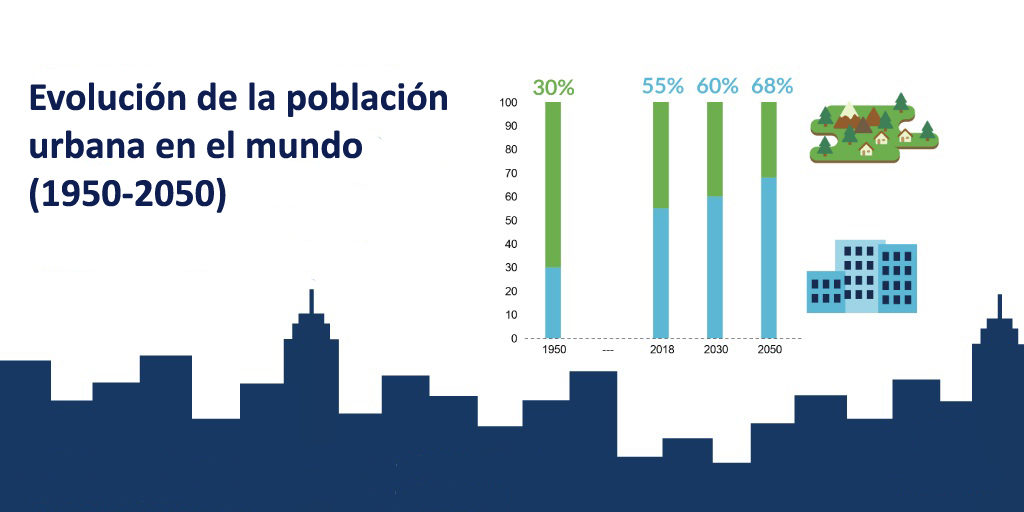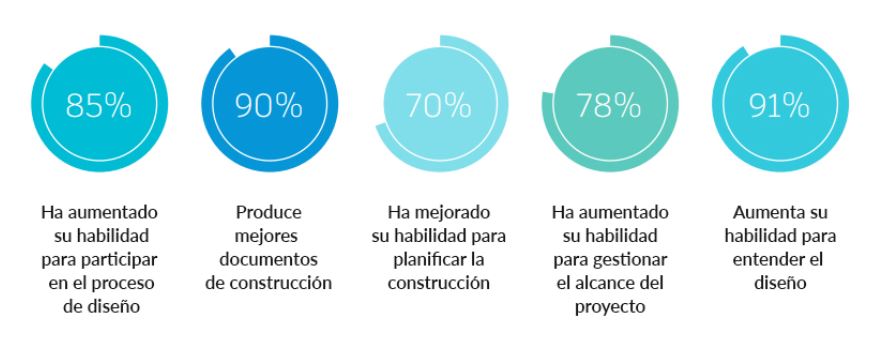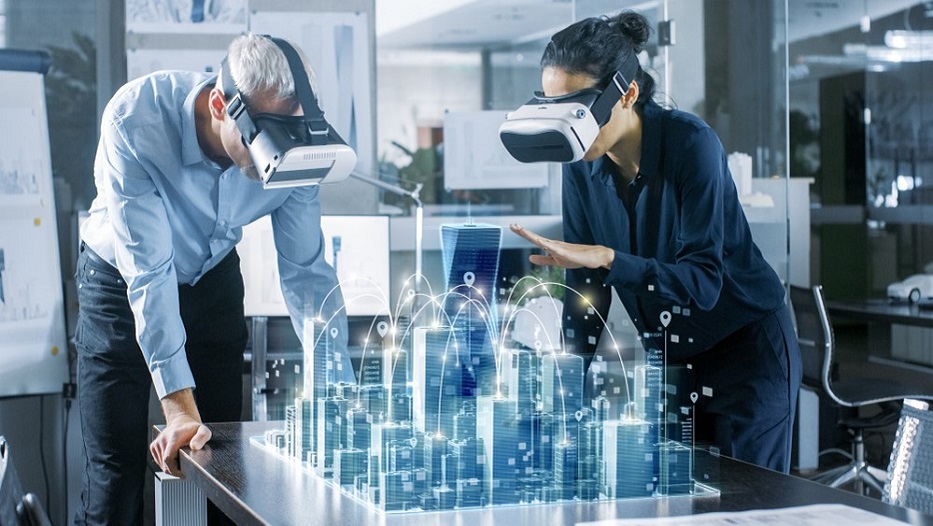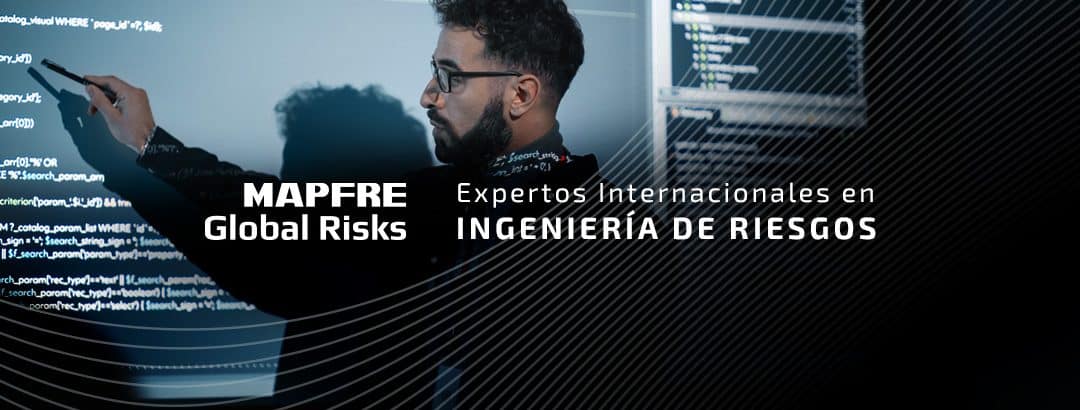admin | 21/02/2019
The rise in comprehensive immersive experiences, thanks to the use of virtual reality, is revolutionizing the AECO sector (architecture, engineering, construction, and operations), as it is embedded in the challenge of creating smart infrastructure. The predictive role of this technology is being used as a basis for developing projects that are safer, more sustainable, and adapted to the future needs of society.
Currently, 55% of the population lives in cities, a figure experiencing exponential growth. So much so that it is estimated to reach 68% in 2050, meaning more than 6 billion people will live in urban areas. Housing this huge volume of inhabitants in limited spaces will be a real challenge and will require a structural rethinking of the resources available, aimed at improving mobility and the sustainable management of infrastructure.
The situation will be especially complicated in megacities (cities with more than 10 million inhabitants), which will increase from today’s 33 to 43 by 2030. These large cities will demand a wide range of services, such as public transportation, electricity, water, and sanitation. To build these services, engineers, architects, and construction professionals are committed to modernizing infrastructure to “make it smart,” paving the way for the emergence of smart cities, and bringing about the need for new solutions to achieve:
– A solid transportation network, in order to ease traffic congestion and reduce pollution, either through new metro and bus lines that guarantee quality public transportation or by introducing sustainable transportation (electric vehicles, bicycles, and scooters). It would also be necessary to integrate smart traffic systems, such as sensor networks and the monitoring of communications infrastructure (smart traffic lights and making information available in real time for drivers).
– Smart energy networks, which help to optimally manage existing resources and guarantee a reliable supply, thanks to the deployment of digital meters and the automation of smart distribution, such as urban lighting, allowing for a significant reduction in energy consumption.
– Management of city waste through smart infrastructure implemented in cities to monitor, collect, transport, treat, recycle, and even eliminate waste effectively and sustainably.
–Reinforced buildings with modern evacuation, fire safety, automation, and energy management systems to optimize urban infrastructure and minimize the impact of extreme weather events.
–Improve the flexibility and responsiveness of critical infrastructure, such as data centers, airports, and telephone systems through cybersecurity-based mechanisms

Source: 2018 Revision of World Urbanization Prospects, from the UN
Virtual Reality applied to Infrastructure
Developing these smart infrastructures involves a large number of new technologies, such as the Internet of Things (IoT), big data, and, remarkably, virtual reality. The practical application of this innovation allows for great advances in the various phases of project development (design, development, control, and maintenance of construction): from establishing urban planning strategies remotely to optimizing construction costs, thanks to the management of open data in real time, testing mobility plans, and prior visualization of infrastructure and its impact on the environment.
In the tasks involved in executing infrastructure, this technology can provide engineers with the possibility of simulating risks and hazards in much more detail
Furthermore, virtual reality systems help enhance video surveillance and improve mapping and zoning techniques in cities. The virtualization of work facilitates accessing reference materials instantaneously or the digital visualization of components located outside the field of vision, and the overlay of detailed instructions in work stations.
In terms of design work, virtual reality is used to incorporate assembly instructions in digital format, simulate product performance in extreme conditions, visualize infrastructure from different angles, and superimpose design components on existing modules. Its application signifies a revolution not only from a conceptual perspective, but an economic one as well, since in civil engineering any small change means a high added cost; with prior simulation, problems can be detected that would otherwise go unnoticed until construction.
La incipiente aplicación de este tipo de obras a nivel global permitirá aliviar, en algunos casos, el alto impacto de los costes.
In the tasks involved in executing infrastructure, this technology can provide engineers with the possibility of simulating risks and hazards in much more detail, leading to a clear improvement in constriction site safety and a reduction of work accidents. These formative tasks can be extended to other technical aspects of the project, increasing the efficiency and productivity of all personnel involved.
From a maintenance perspective, the greatest advantage offered by virtual reality is its predictive capacity, since it facilitates the fast detection of system failures and remote repair in real time, as well as the possibility of giving instructions to the professionals in charge from a distance.
The future is BIM
One of the biggest challenges in applying virtual reality to smart infrastructure projects will be its financing, especially in emerging countries, as this technology requires a large investment. The exponential growth of some cities in these markets requires the adaptation of their infrastructure; otherwise, the existing infrastructure could pose a serious risks to their populations.
Building Information Modeling (BIM) is a methodology that will have a definitive impact; it consists of the process of generating and managing a building’s data during its life cycle using three-dimensional dynamic modeling software in real time, which covers the geometry of the building, spatial relations, geographic information, and the quantities and properties of its components to decrease the loss of time and resources in its design and construction
Virtual reality allows for project creation and development to be globalized, as the process can be shared among different entities from around the world, which in the long run will facilitate the involvement of more players and favor investment. Furthermore, the incipient application of this type of project worldwide will, in some cases, alleviate the high impact of costs.
According to a report from the U.S. Green Building Council and Booz & Company, construction methods will evolve considerably in the coming decades as technological advances are integrated; 3D printing will have a great impact on the construction sector (especially in materials and design), since it will streamline processes and alleviate the demographic tension that cities are bound to suffer.
Along these lines, a new methodology, Building Information Modeling (BIM), will have a definitive impact on the future of smart structures, as it enables the use of 3D visualization devices. It consists of the process of generating and managing a building’s data during its life cycle using three-dimensional dynamic modeling software in real time, which covers the geometry of the building, spatial relations, geographic information, and the quantities and properties of its components to decrease the loss of time and resources in its design and construction.
From a maintenance perspective, the greatest advantage offered by virtual reality is its predictive capacity, since it facilitates the fast detection of system failures and remote repair in real time, as well as the possibility of giving instructions to the professionals in charge from a distance
The effect of this technology on infrastructure projects is such that in many countries its use is already mandatory. In Spain it has been required for public tenders since December 2018, and will be required for public infrastructure tenders starting in July 2019. In fact, as stated in Aenoer’s Standardization Report, “Standards in Support of BIM,” it is estimated that this methodology could make project measurements 37% more accurate and reduce construction costs by 20%.
Benefits of applying in construction

Source: The current state of BIM around the world, from McGraw-Hill Construction, published by Bimcommunity.com
Pros and cons of virtual reality
Applying virtual reality has a decisive impact on smart infrastructure projects due to the great number of advantages that it offers:
- Simulation of processes (evacuation systems, people flow, etc.)
- Predictive construction model
- Interconnectivity of processes among the different players involved
- Improved detection of failures in architectural and structural elements
- An increase in productivity and design quality
- Changes and feedback in real time, prior to construction
- Interaction with the materials and modeling elements
However, this technology still has a number of unknowns that must be resolved in the near future:
· Complexity of the technological structure (in terms of power, capacity, and availability)
· A high level of initial investment, especially in the modernization of broadband for data transmission
· Connectivity and latency issues
· The slow pace of adapting regulatory systems in some countries compared to advances in new technology
· Difficulty in integrating and using different generations of virtual technology in the operation and future maintenance of infrastructure





